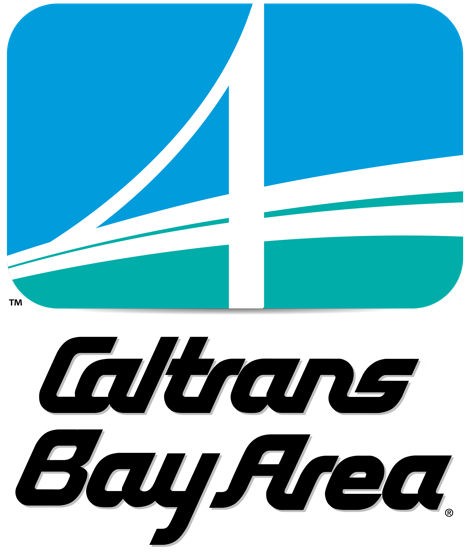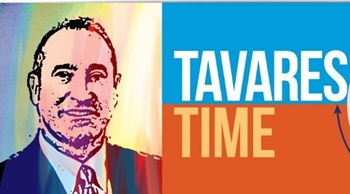Editor's Note
 Editor’s Note
Editor’s Note
By Jeff Weiss
What’s in a name or a logo?
Think about our local baseball team, the Oakland A’s. You may refer to them as the Athletics, but few people do. And what about the A’s logo? The most prevalent one is the image of the “A’s” encircled by the words “Oakland Athletics.” Pretty straightforward. On the other hand, I own an A’s cap bearing the image of an elephant holding a bat in his trunk while standing on a circus ball made to look like a baseball. What is that supposed to mean?
It’s a long story, but it comes from a snide remark made in 1902 by Giant’s Manager John McGraw who answered a reporter’s question about the A’s buying up contracts for National League players. “They have a white elephant on their hands,” he said, meaning they have something they don’t need. Instead of ruffling their feathers, the A’s embraced it, and made a white elephant their logo.
Despite McGraw’s snide remark, I’m a Giant’s fan, but I’d prefer they call themselves the Seals, the name of the Pacific League team that inhabited San Francisco before the Giants arrived in 1958. I’ve yet to find anyone to agree with me, but hear me out: If I bus over to Fisherman’s Wharf, I can find about fifty barking, basking, or swimming seals. But I’ve yet to see one giant wandering around town.
I guess all my rambling comes down to this: Names and logos tend to reference a place, a history, and a vocation.
If you are a secret society, you might select an obscure name and represent yourself with cryptic symbols; only your members will know what it means. A popular sports team can use nicknames and icons like elephants on their logos – and if people don’t know the history, they still get the overall message.
A public agency the size of Caltrans is familiar to most. But we must still recognize our place, history, and mission, and that’s why we’ve rolled out the name “Caltrans Bay Area” along with our logo of the Bay Bridge. In a nod to history, the bridge is fashioned from the number “4,” our historic district number.
The new name simplifies things for our partners and the public. After all, for the lay reader, not much can be gleaned from the name Caltrans District 4, except there must be at least three other districts. Caltrans Bay Area is user-friendly and geographically descriptive, eliminating the follow-up question, “So what area does District 4 encompass?”
Yes, it’s a new name and logo, but don’t rush to order new business cards. The transition will be slow and the moniker District 4 is still appropriate for internal and external communications. On the other hand, feel free to use the new name and logo. It’s there for you to use and we encourage it.
What about an acronym? Should we write out Caltrans Bay Area? Or can we abbreviate to CBA? The answer is - not yet. Again, the rollout will be incremental, and time will tell. Acronyms, abbreviations, and nicknames certainly have their place, however, and in this publication, we will use Caltrans Bay Area, District 4, the District, and D4.
 Tony Tavares Leaves to be District Director in Los Angeles
Tony Tavares Leaves to be District Director in Los Angeles
Tony Tavares, our former District Director, has left for Los Angeles where he takes over as District Director of District 7 (Los Angeles and Ventura counties). For over three years, Tony worked as Caltrans Bay Area's Director where he managed billions of dollars of projects in the state’s busiest district. Tony’s hard work, forward-thinking, optimistic disposition, and commitment to the district and outside communities will long be remembered.
We’re sorry to see him go but wish him the best in Los Angeles, a place where he spent many years of his Caltrans career. He’s looking forward to returning there. Our loss is their gain. No word yet on who will replace him. In the meantime, Dina El Tawansy, our former Deputy District Director, has taken the helm as the interim District Director.
Wildfires

Since the shelter in place ordinance in March, I’ve been working from my home in San Francisco, usually in a makeshift office in my backyard. It's nice. I hear birds chirping or ravens cawing, and at least once a day, the parrots of Telegraph Hill fly overhead, squawking like crazy. Apparently, the little flock has grown to several flocks that have spread out over the city. It's a pleasant place to work.
But there were many days in August and September when sitting in the backyard would have been unthinkable. Wildfires burned hundreds of acres of forests every day and the air was inundated with smoke. For weeks at a time, my morning ritual was pouring a cup of coffee and checking Purple Air to see the day’s air quality. Some days were so smoky, I couldn’t see the steeple of St. Ignatius Cathedral three blocks away.
Then we had “Orange Day,” also known as the “Day on Mars” or the “End of Times,” the strangest day I’ve ever experienced. It was so dark, motorists used their headlights all day, and the streetlights never turned off. Remarkably the air quality wasn’t too bad. Most of the smoke has settled on a thick layer of fog and never reached the ground. But the combination of fog and smoke blocked the sun and cast an orange glow like nothing ever seen.
There’s a strange beauty to the pictures of the Orange Day. You can’t help but to ooh and aah at the photos, much like watching 4th of July fireworks. But beneath the orange veneer, is the story of an environmental catastrophe, not to mention a threat to one’s heart and lungs.
We can take positive steps to reduce greenhouse gases that warm the planet, change the climate, and cause rampant destruction. We can use less plastic, eat less meat, drive less. These things are healthier for us, our state, and the planet.
Despite the fire and smoke, we have positive stories to tell, including one about a Caltrans maintenance crew who saved a rancher’s animals threatened by the smoke and flames of the SCZ fires in San Mateo County.
Speaking of animals, the District employed about 400 goats to clear the brush along Highway 101 in Sonoma County, creating a wide firebreak in perhaps the most eco-friendly way possible. Goats are a method of vegetation control that has, ahem, legs, and may be used more often in the future.
As for history, Dan Kirkland was one of the first African-American engineers at Caltrans. After interviewing his friends and family, you might be tempted to write only about his friendly personality and his mentoring of other engineers. He was that kind of a person. But he was also was a lead designer of one of Caltrans’ first cable-stayed bridge.
Be sure to check out the tool drawer, an organized set of clickable tools leading to sites that will make your job easier.
HEAT and SNOW
The Bay Area is known for temperate winters, but soon SNOW will replace HEAT in the district. It's an IT thing which rolls out soon. When implemented, employees will no longer submit HEAT tickets as a means of getting help with internet issues. Rather they will go through SNOW, which is a new cloud-based help center. Service Now (SNOW) is a multi-faceted help center worth getting acquainted with.
For those of you who've put in the time at Caltrans and other state service, allow me to introduce you to the Quarter Century Club. The Quarter Century Club will keep you apprised of Caltrans issues and events whether you're retired or still working.
To keep you on your toes, this edition once again contains a puzzle, this time testing your knowledge of Caltrans Bridges. Is it harder than the last issue’s puzzle about highway names? You decide and let me know. jeffrey.weiss@dot.ca.gov

